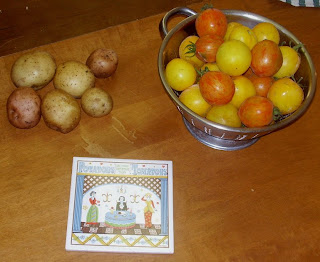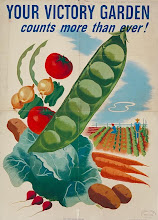I canned more heirloom tomatoes the other night. Varieties above include gold medal, red zebra, sungold cherry, large red cherry, and unknown yellow. Hubby helped with peeling and coring. Now I have eight quarts of tomatoes. Doesn't seem like much.
Goat update: The goats are doing fine. After a bout with worms, Dawn is on the skinny side, but is gaining weight quickly. In two months I will take Dawn to a breeder, so hopefully we will have kid(s) next April. The goats are now pastured in our old garden/weed bed, and though they are doing a great job eating the weeds, they are also doing a great job getting seedheads and burrs stuck in their coats. Burrs and mohair are not a good combination.
I gave Dawn the worst shearing job in the history of all things sheared the other week. I had a blade attachment on the clipper, which apparently I shouldn't have had on. After over an hour of struggling, yet with most of the job done, I had to stop and pick up my kids from school. That night I checked around on the internet and realized my mistake. The next day I took off the attachment, and finished the shearing in five minutes.
Shearing Eve will be easier, except for the fact that this will be her first shearing. She'll be more scared and wiggly. It might be easiest if I 'hog-tied' her and laid her on the floor on her side. That way I won't be fighting to hold her still, and I will be less likely to accidently cut her.
So right now I have a plastic grocery bag of brown mohair, looking very similar to the photo above. After picking out the burrs, washing it and picking out all the bad bits, I should have about two pounds. What will I do with two pounds of mohair? Who knows. I have the names of a couple of spinners in the area, maybe I'll give them a call.
By the way, even though Blogger says this post was made on September 18, it was really posted on September 19, 2008. Also, the wrong time is on this and the last post. Maybe everything I post on here now will be dated at 1:35 pm on September 18. We'll have to see...




